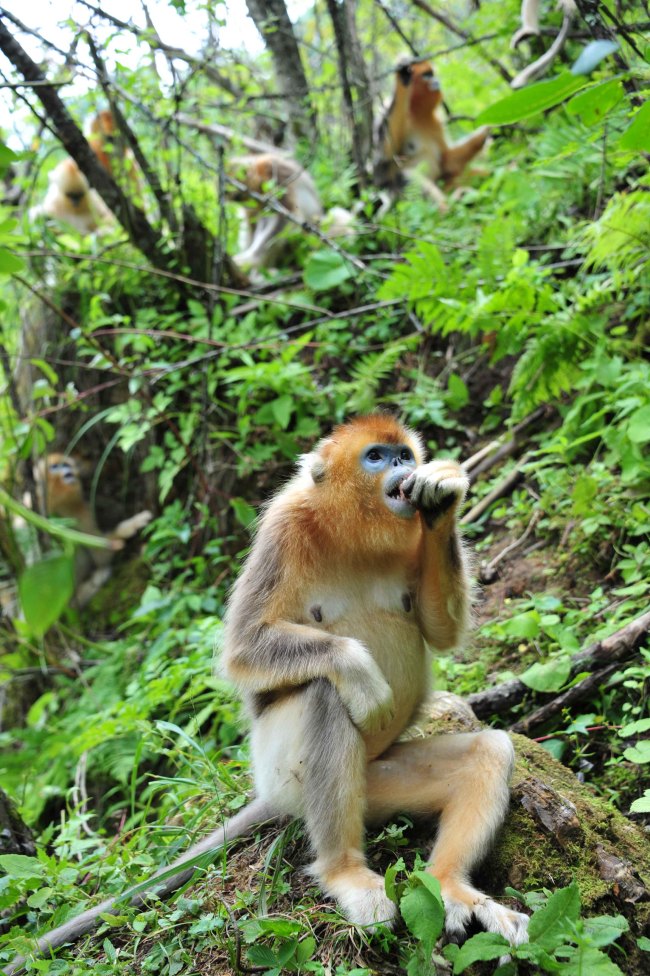WASHINGTON (AP) ― Only a few species of mammals are monogamous, and now dueling scientific teams think they’ve figured out why they got that way. But their answers aren’t exactly romantic.
The answers aren’t even the same.
One team looked just at primates, the animal group that includes apes and monkeys. The researchers said the exclusive pairing of a male and a female evolved as a way to let fathers defend their young against being killed by other males.
The other scientific team got a different answer after examining about 2,000 species of non-human mammals. They concluded that mammals became monogamous because females had spread out geographically, and so males had to stick close by to fend off the competition.
The answers aren’t even the same.
One team looked just at primates, the animal group that includes apes and monkeys. The researchers said the exclusive pairing of a male and a female evolved as a way to let fathers defend their young against being killed by other males.
The other scientific team got a different answer after examining about 2,000 species of non-human mammals. They concluded that mammals became monogamous because females had spread out geographically, and so males had to stick close by to fend off the competition.

So it’s not about romance, said researcher Dieter Lukas of the University of Cambridge, lead author of the mammals study. “It’s just really the best he can do.”
The differing conclusions apparently arose because the two teams used different methods and sample sizes, the researchers said.
But both teams discounted a long-standing explanation for monogamy, that it provides two parents rather than one for rearing offspring. That’s just a side benefit, they said.
“Romance obviously came after” monogamy, said Christopher “Kit” Opie, an anthropology researcher at the University College London, who was the lead author of the primate study.
The studies are published online in the journals Science and the Proceedings of the National Academy of Sciences. The mammal paper in Science excluded humans while the primate analysis in PNAS counted people both as monogamous and not, because that differs around the world.
Researchers said they hesitated to apply their conclusions to humans, and they acknowledged that their results aren’t exactly the stuff of Valentine’s Day.
Less than 9 percent of mammal species pair up socially.
Among primates, about 25 percent of the species are socially monogamous, Opie said. Some, like gibbons, are highly monogamous while others, like chimps, are on the other end of the spectrum, Opie said.
Opie drew on data about how 230 primate species behave, and he mapped out evolutionary family trees for them. Then, using more than 10,000 computer model runs and calculating the same mathematical probability system that famed prognosticator and statistician Nate Silver employs, Opie came up with a timeline for when certain traits developed, he said.
His result: Before any of the social traits associated with monogamy appeared, Opie saw signs of high rates of outside males killing babies. In primates that developed monogamy, such pairing up appeared to develop only later, he said.
-
Articles by Korea Herald


![[Exclusive] Korean military set to ban iPhones over 'security' concerns](http://res.heraldm.com/phpwas/restmb_idxmake.php?idx=644&simg=/content/image/2024/04/23/20240423050599_0.jpg&u=20240423183955)

![[Graphic News] 77% of young Koreans still financially dependent](http://res.heraldm.com/phpwas/restmb_idxmake.php?idx=644&simg=/content/image/2024/04/22/20240422050762_0.gif&u=)



![[Pressure points] Leggings in public: Fashion statement or social faux pas?](http://res.heraldm.com/phpwas/restmb_idxmake.php?idx=644&simg=/content/image/2024/04/23/20240423050669_0.jpg&u=)










